Student Motivation
Students are more likely to
engage in learning when they
·
see value in what they’re
learning
·
believe that engaging in specific actions
will bring about a desired outcome
·
believe they can be successful
·
perceive that the environment is supportive
To
help motivate students . . .
STRUCTURE YOUR COURSE AND EACH CLASS TO HELP STUDENTS
KNOW WHAT TO EXPECT
·
Use the syllabus to clarify what the student
will learn, your expectations, and how the course will be conducted
·
At the beginning of class, explain the focus
of the class and what they should be able to know and do by the end
·
Align what happens with this initial framing
of the class
·
Close the class with a summary; provide
opportunities for students to summarize by asking them to:
§ Respond
to clicker questions that gauge what they learned in class
§ Draw
a concept map of what they learned
§ Write
a one minute paper about what they have learned
·
Prepare students for future classes and other
learning opportunities.
PROVIDE LEARNING EXPERIENCES WHERE STUDENTS FEEL THEY
CAN BE SUCCESSFUL
·
Set challenging but attainable goals and
assignments (success within reach)
·
Especially early in the course, help students experience
success; for example, incorporate early, shorter assignments that account
for a small percentage of their final grade
·
Encourage student choice in
how to achieve a particular assignment or learning outcome
·
Let students know that you believe they
can be successful – that you have set high expectations and you are confident
they have what it takes to meet them.
INCLUDE OPPORTUNITIES FOR STUDENTS (AND YOU!) TO GAIN
INFORMATION ON HOW THEY ARE DOING
·
Diagnose students' understanding as they
enter class (e.g., begin class with an informal poll or diagnostic question, or
post it the night before)
·
Provide rubrics for assignments and give
feedback based on them
·
Provide timely and targeted feedback about
how students are progressing [link to clickers (using effectively; formative
assessment/CATS]
·
Incorporate Clicker questions or other
in-class assessments designed to identify what students know or don’t know.
·
Take advantage of course analytics (e.g.,
through your Learning Management System (LMS) or the Early Academic Warning
System (EAWS)).
·
Guide students to use the feedback they are
getting from in-class activities, checks for understanding, class
discussion, out-of-class homework and other activities
·
Acknowledge specific areas where
students are doing well and identify a few specific ways that improvement
might occur; focus the latter so student has key actions for improvement that
are achievable
FOSTER APPLICATION/CONNECTION OF WHAT STUDENTS ARE
LEARNING TO THEIR OWN LIVES
·
Design learning experiences that are relevant
to students' lives
·
Craft activities that encourage application
of content to situations they will likely encounter
CREATE A POSITIVE CLIMATE/COMMUNITY FOR LEARNING
WHERE STUDENTS FEEL SUPPORTED
·
Get to know your students. Learn students’
names and create relationships with them a few at a time (e.g., feature
students of the day, or invite the class to meet with you in their small
groups)
·
Craft specific opportunities for individual
students to participate in the learning experience (e.g., feature students’
work in front of the class, arrange for volunteers to come to the board or lead
out in discussion). [government example re: two students relevance of
newsfeed;
·
Promote social exchanges for learning among
peers. Class interaction is more lively when the conversation broadens
beyond just alternating between you and one person in the class. [see ideas for
peer learning under discussions]
·
Let students know how they can link with each
other (e.g., Hoot.me, Piazza, Peerwise, Discussion Boards in Blackboard,
etc.).
·
Make explicit that you (and TAs, etc.) are
interested in their success, are available to support them, and have provided
or pointed them to ample ways for them to get the help they need

















Social Plugin